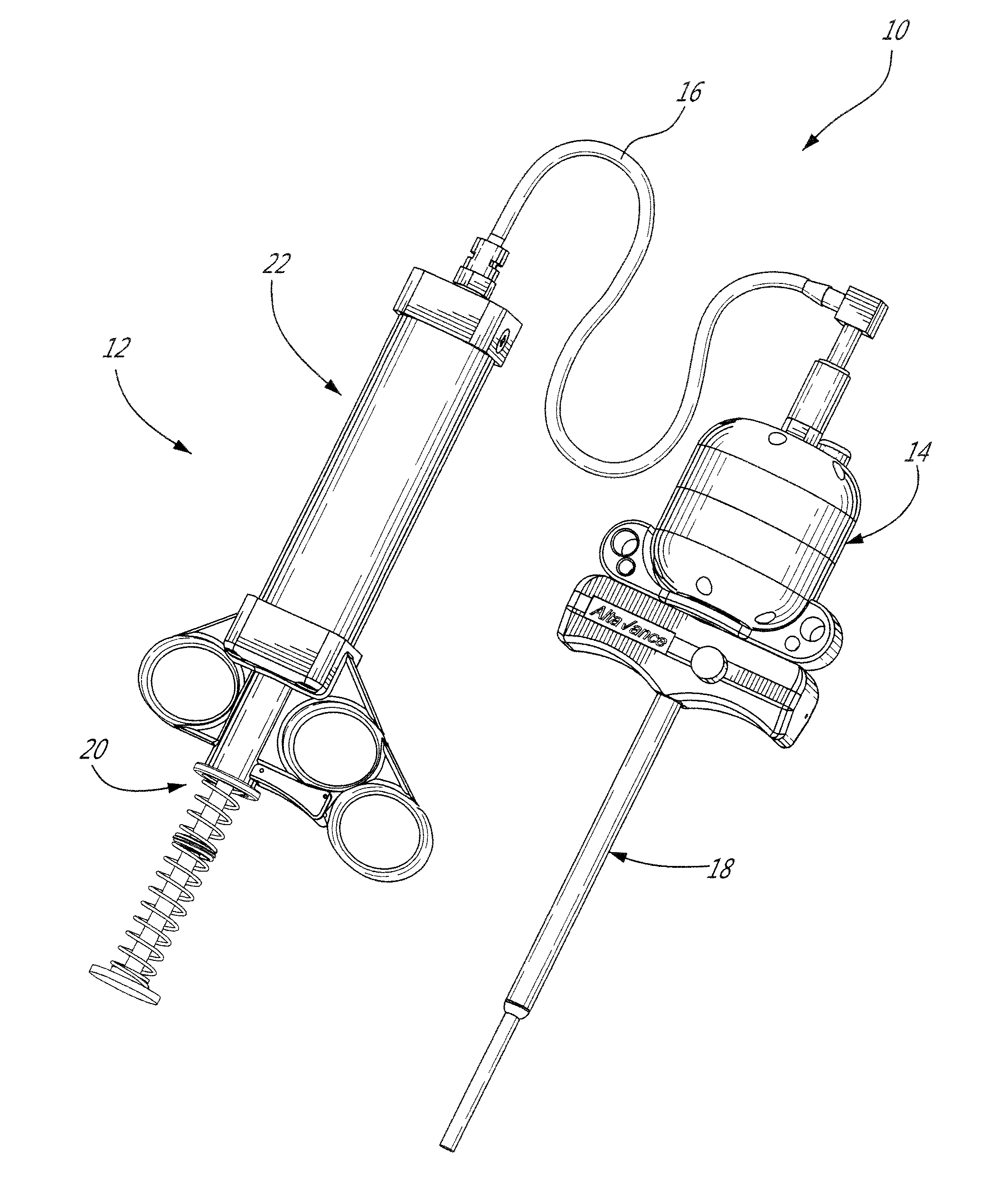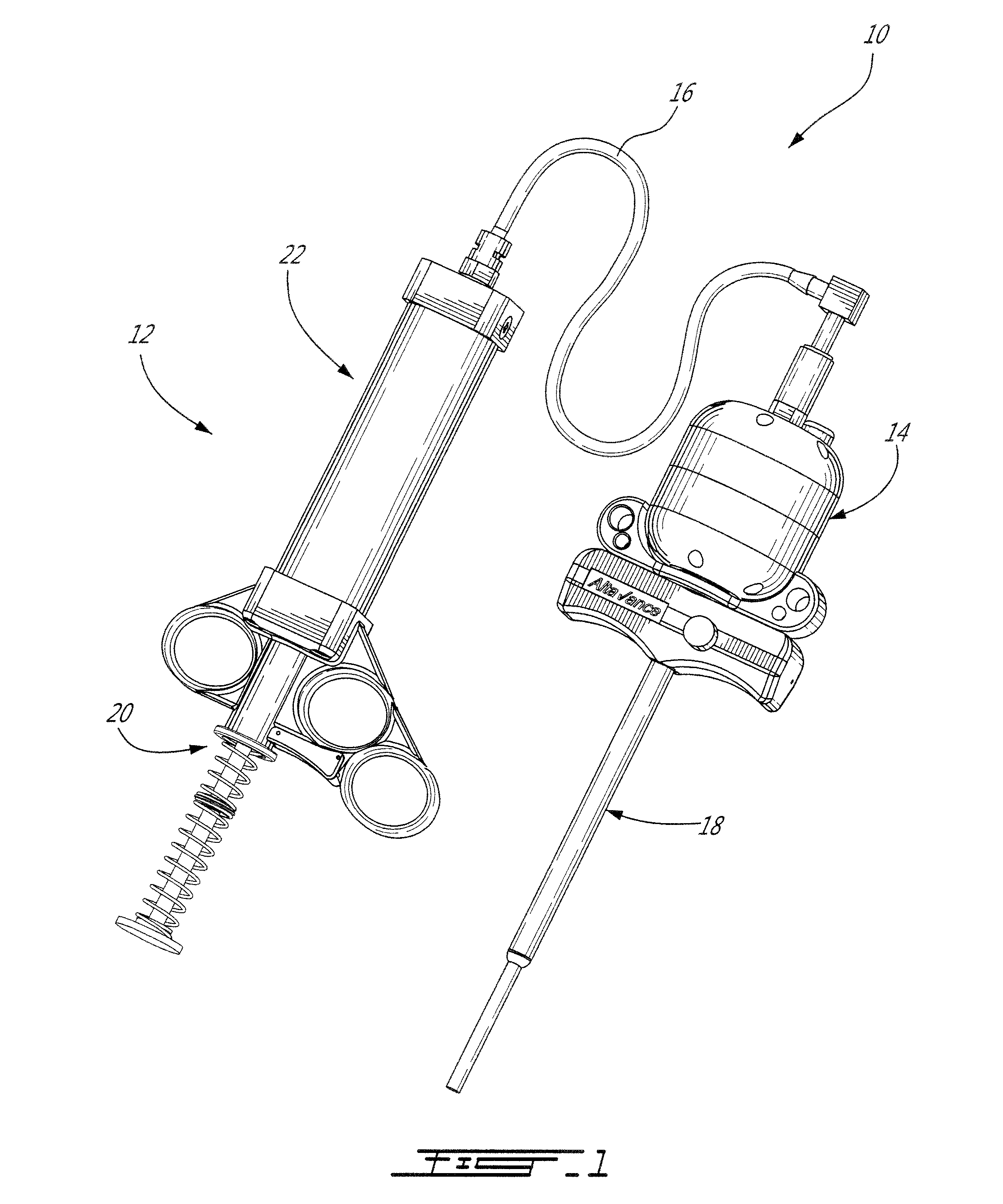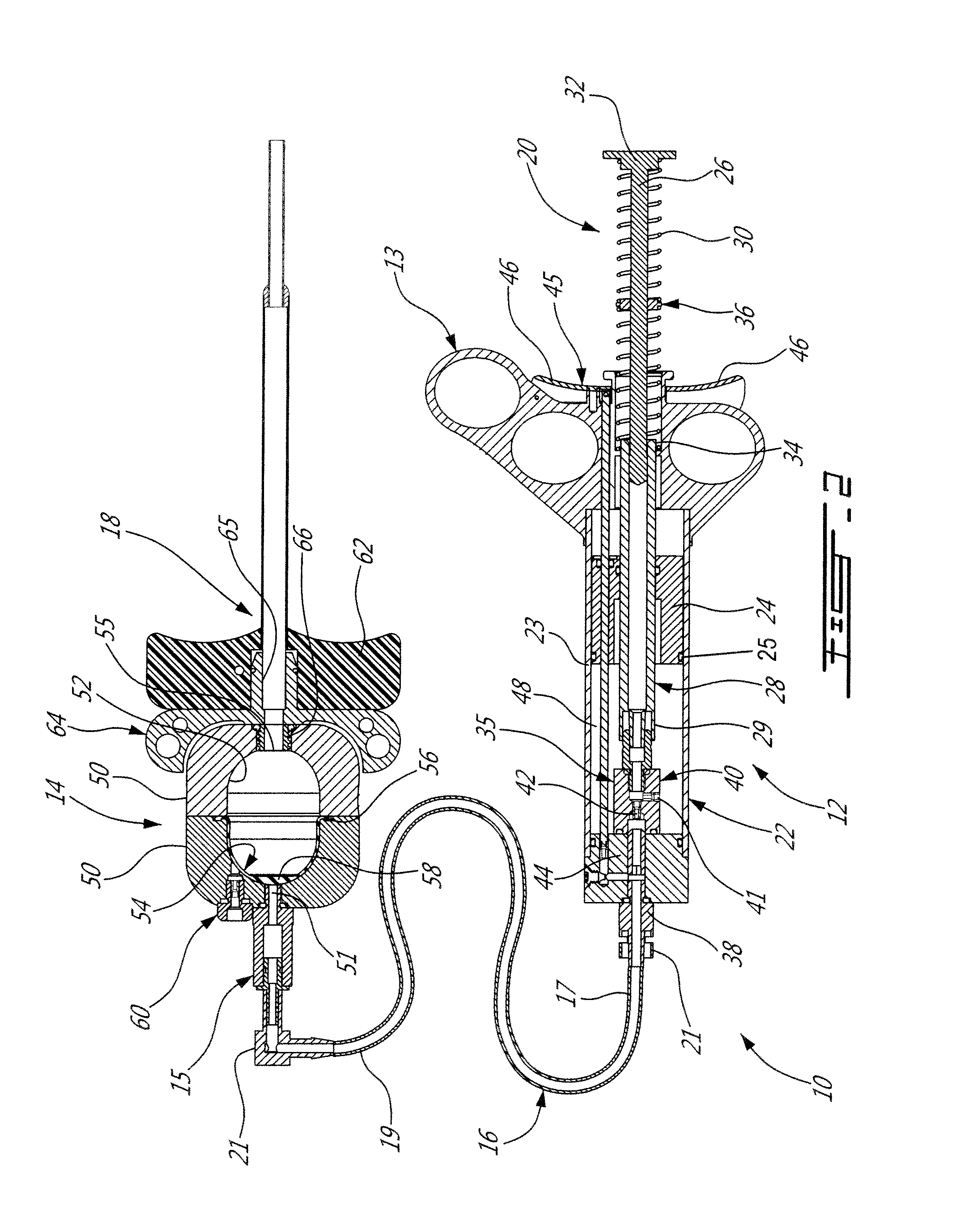Bone cement injection device
a technology of bone cement and injection device, which is applied in the field of bone cement injection device, can solve the problems of reducing the pain experienced by patients, affecting the quality of bone cement injection, and the transpedicular vertebroplasty procedure itself has not been optimized to date, and achieves the effect of high viscosity material
- Summary
- Abstract
- Description
- Claims
- Application Information
AI Technical Summary
Benefits of technology
Problems solved by technology
Method used
Image
Examples
Embodiment Construction
[0041]The present injection system is preferably adapted for, and used to perform, percutaneous vertebroplasty and more particularly transpedicular vertebroplasty. However, the present system may also be adapted for other medical uses which involve injecting high viscosity material, either bone cement or otherwise, into a cavities, especially intraosseous ones.
[0042]Using the present injection system as described below, the vertebral body is filled with bone cement, such as Polymethyl Methacrylate [PMMA] for example, via a cannula and solidifies in and thus stabilizes the fractured vertebra. The cannula is inserted through the cutaneous layers and the cortical bone of the vertebra so that the tip of the cannula can be positioned transpedicularly in the cancellous bone of the vertebral body. The high viscosity bone cement is then able to be delivered through the cannula, usually under fluoroscopic guidance, into the trabecular bone of the vertebral body. By injecting the bone cement ...
PUM
 Login to View More
Login to View More Abstract
Description
Claims
Application Information
 Login to View More
Login to View More - R&D
- Intellectual Property
- Life Sciences
- Materials
- Tech Scout
- Unparalleled Data Quality
- Higher Quality Content
- 60% Fewer Hallucinations
Browse by: Latest US Patents, China's latest patents, Technical Efficacy Thesaurus, Application Domain, Technology Topic, Popular Technical Reports.
© 2025 PatSnap. All rights reserved.Legal|Privacy policy|Modern Slavery Act Transparency Statement|Sitemap|About US| Contact US: help@patsnap.com



